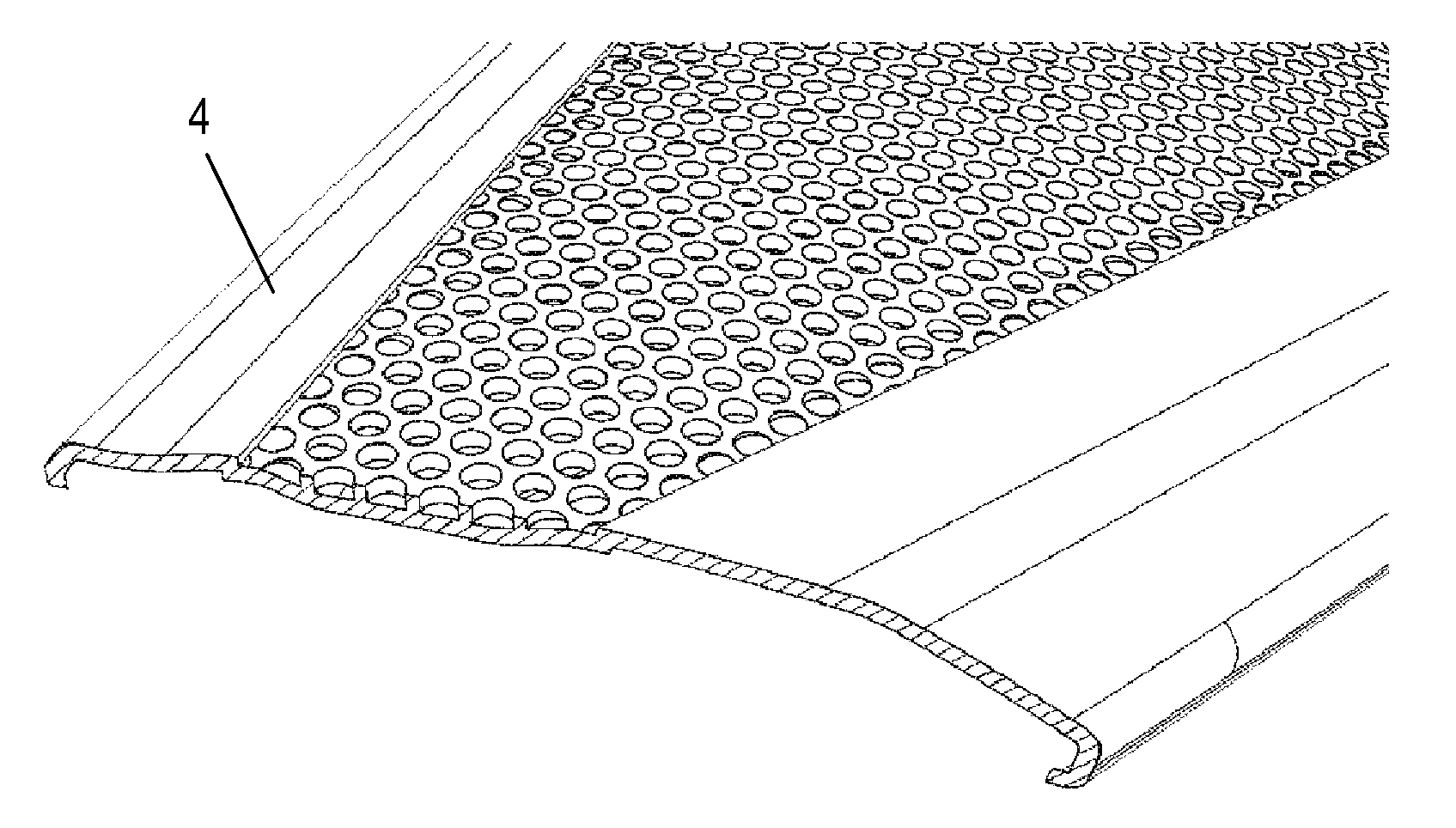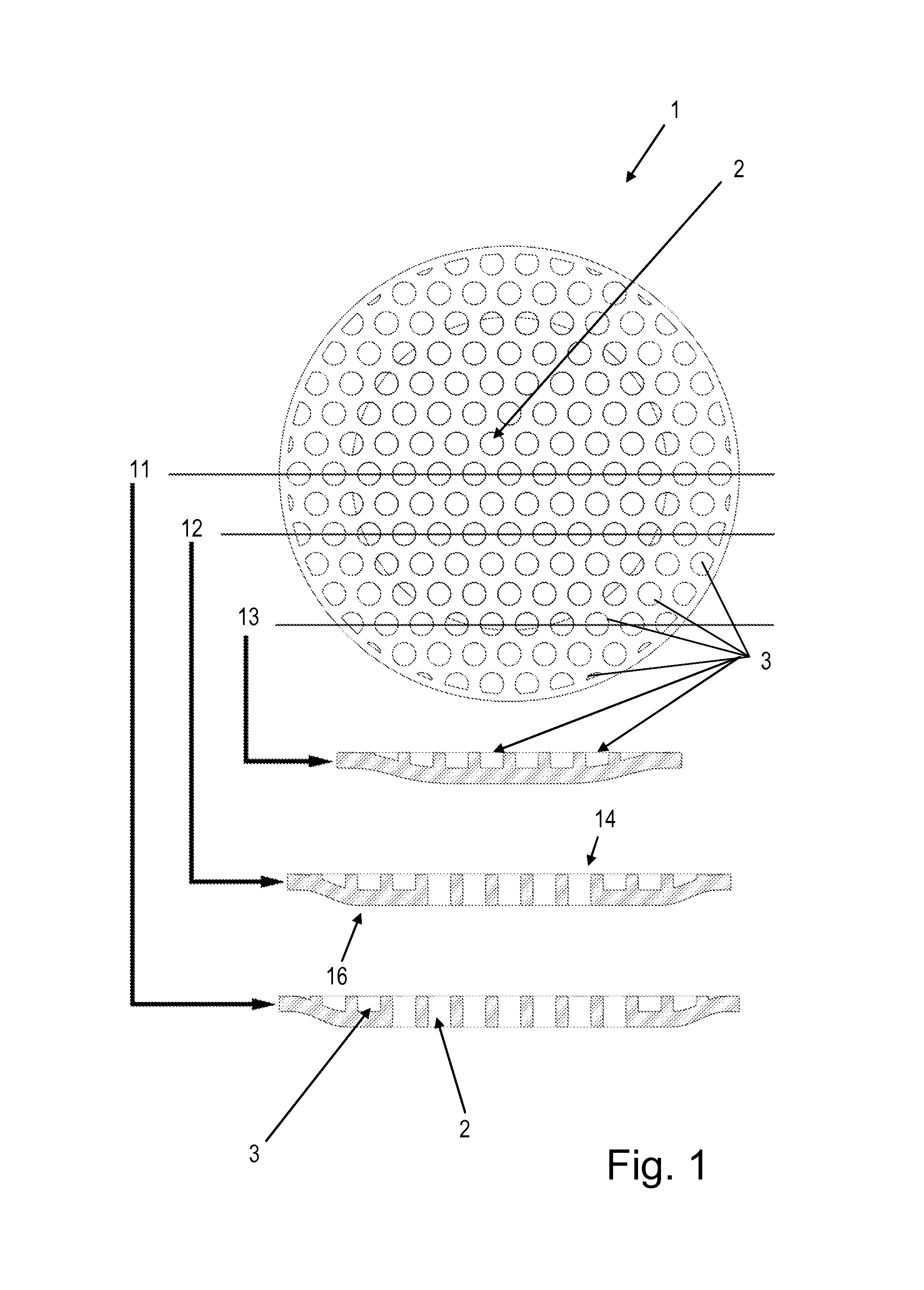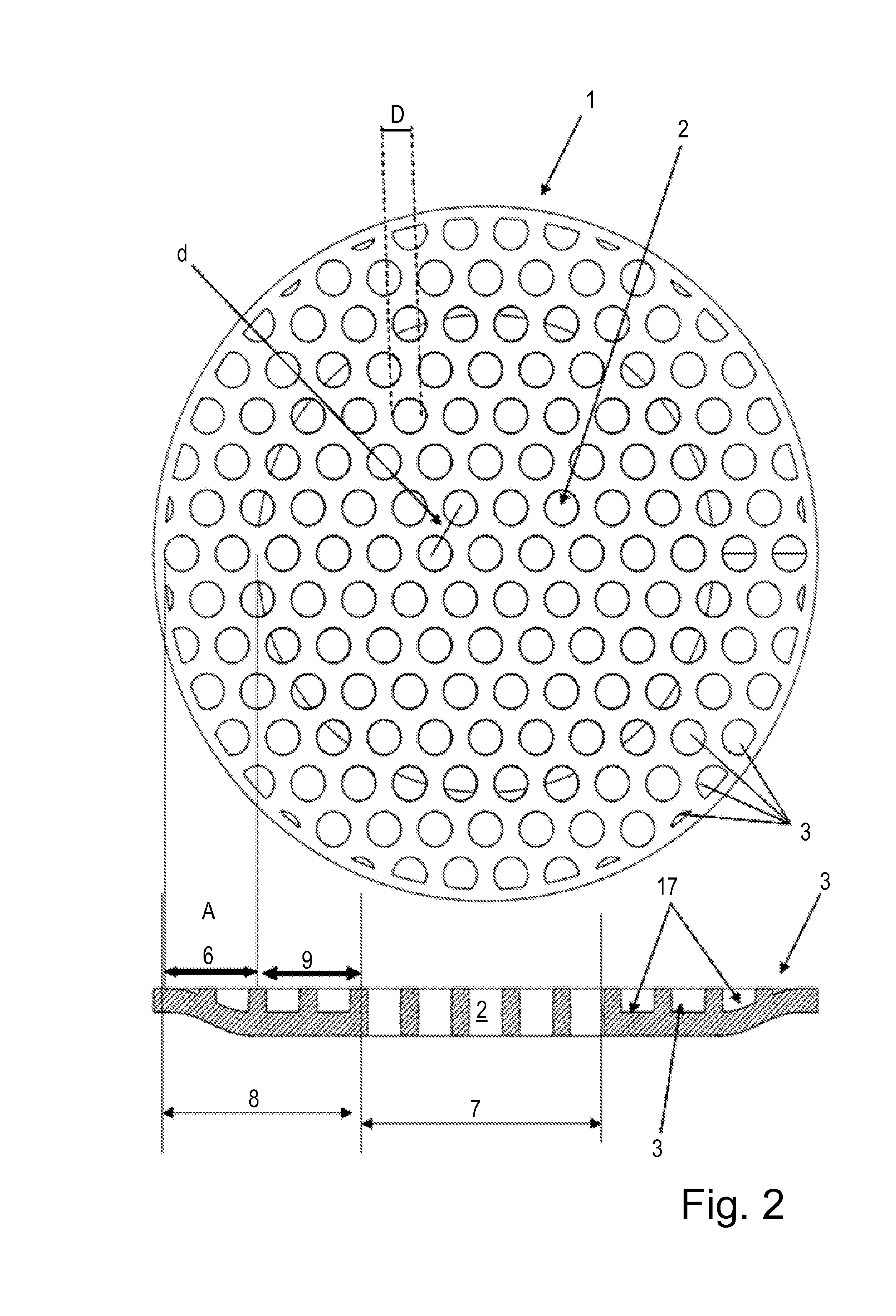Injection molded cover element with uninterrupted hole pattern
a technology of injection molding and pattern, which is applied in the direction of roofs, transportation and packaging, transducer casings/cabinets/supports, etc., can solve the problems of undesired appearance, inability to produce a truncated hole, and imposed limits on the hole, so as to improve the appearance and therefore processing quality, reduce the depth of the finished blind hole, and reduce the diameter
- Summary
- Abstract
- Description
- Claims
- Application Information
AI Technical Summary
Benefits of technology
Problems solved by technology
Method used
Image
Examples
Embodiment Construction
[0027]In the different figures, like parts are always denoted by like reference signs and are therefore generally also only described once.
[0028]FIG. 1 shows a cover element 1 or a grille element 1, which has through-holes 2 and blind holes 3 as well as a hole-free rim 4 (FIGS. 3 and 4), the cover element 1 being produced from a plastics material by injection molding. The blind holes 3 occupy an edge region 8 which may include an end edge subregion 6 (FIG. 2) wherein the depth of blind holes 3 is generally decreasing in proportion to the proximity of holes 3 to rim 4.
[0029]In the exemplary embodiment illustrated in FIG. 1, the cover element 1 is designed by way of example as a loudspeaker grille 1. The cover element 1 has an acoustically active zone 7 (with through holes 2) and an acoustically passive zone 8 (with blind holes 3).
[0030]The acoustically passive zone 8 can thus also be referred to as an edge region 8, which has two subregions: an inter-edge region 9 and the end edge re...
PUM
 Login to View More
Login to View More Abstract
Description
Claims
Application Information
 Login to View More
Login to View More - R&D
- Intellectual Property
- Life Sciences
- Materials
- Tech Scout
- Unparalleled Data Quality
- Higher Quality Content
- 60% Fewer Hallucinations
Browse by: Latest US Patents, China's latest patents, Technical Efficacy Thesaurus, Application Domain, Technology Topic, Popular Technical Reports.
© 2025 PatSnap. All rights reserved.Legal|Privacy policy|Modern Slavery Act Transparency Statement|Sitemap|About US| Contact US: help@patsnap.com



